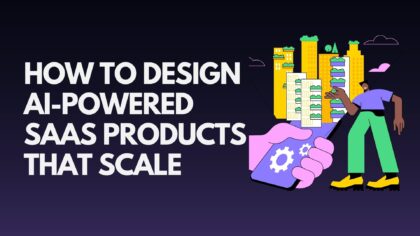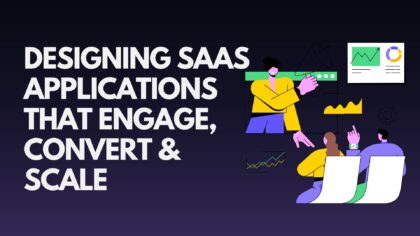The businesses that thrive on the other side of the pandemic are going to be the ones with a strong, recognizable brand strategy. This means they know exactly who their customer is and why their customer would want to choose them over even their closest competitor. If you don’t feel rock solid about this, getting a brand strategy in place could be the best use of your time while things slow down.
What is Brand Strategy?
Brand strategy is a framework to guide your branding and marketing that yields tangible results. Not only do you want to create a brand with a personality using storytelling, but you also want a stunning logo, consistent messaging and guidelines to lead your creative direction.
Brand strategy is a blend of visuals, tone, messaging and insight into your customers to create a magnetic brand that’s irresistible to them. Different from creating a fantasy mood board, brand strategy is a process based in reality, with the goal of connecting with your real customers.
Common Misconceptions in Branding
The word ‘branding’ can mean different things to different people. At Aeolidia, we’re driven by data and analysis and always have the end goal of connecting with customers for increased conversion rates and a great return on your investment.
There are three misconceptions we often encounter when we talk about branding.
Misconception #1: Your branding should reflect an idealized customer. Are you lusting after the branding of a luxury boutique and fantasize about millionaires walking through your door? But you run a pizza shop in a small town? Sounds like a mismatch (unless it’s a rather distinctive small town, in which case, rock on!). A strategic brand analysis looks at your actual business’s real customers, then creates a strategy from there that integrates your future goals for your business.
Misconception #2: Your company’s branding should be the same as your personal style. This is sometimes true, but not necessarily. Your brand needs to connect with your customers, so understanding what you’re selling and determining the brand identity that will function for your business is crucial. There is usually a happy medium between your personal style, your ideal brand, and your customer’s identity.
Misconception #3: Brand strategy is the same as brand design. Brand strategy requires digging deep into your business to build a framework that will lead your company to achieving your goals. Brand design typically refers to the graphic design component of a brand identity. This portion is what we implement in stage 3 of our process, described below.
The Process: The Discovery Phase
It is crucial to understand your business in order to build a brand that will evolve as you grow.
If you don’t do discovery work upfront, it’s like building a beautiful house without a good foundation. Looks nice, but is destined to crumble. It is important to do the upfront strategy work before diving into design work. We’ll share with you some of the questions we use as part of our process.
As an Aeolidia client, you’re given a lot of homework to answer the questions we need. We get super in-depth about where you are now in your branding in your business and your goals in the next 5 years and your longer vision. We have a series of worksheets and exercises to guide you through this discovery process, even if you feel too ‘inside’ your business to see your business from an outside perspective.
Questions to ask yourself about your business:
- Where are you at now?
- What are your goals?
- What makes your business special?
- What makes you an expert?
Think of your shop as a storefront, which is sandwiched between two shops that sell similar products. Why would a customer come into your shop? We want to examine those questions to pinpoint your appeal to a customer.
Questions to ask yourself about your customers:
- Who are they?
- What are their emotional pulls?
- What are their needs and challenges?
- What are their friction points?
Many of our clients find it useful to think about existing or favorite customers when doing these exercises. Why are they coming back to you? Dig deep into the details. What other brands do they like to shop? What are their interests? These are all crucial things to consider when building personas.
Brand tone and voice consists of:
- Brand personality
- Brand values
- Tone and voice
Being too generic and broad means that you aren’t connecting with anyone with your messaging. Identifying a unique voice and personality is what allows your brand to develop an identity and will drive your messaging, web copy and social media efforts.
Questions to ask yourself about your market space/niche:
- Who are your top 3 competitors?
- What is your area of opportunity?
- How can you use your strengths?
If your competitors have beautiful products, but a mediocre web experience, then offering beautiful products with a stunning and engaging website could be your area of opportunity. Identify the holes in the industry and excel where others are not.
The Process: Identifying and Crafting Your Brand Story
This step in the process is the foundation of your design. Your brand story will drive your identity moving forward: graphic design, web design, copywriting, photography, packaging and even customer service.
Your brand strategy includes tone & voice, visuals and messaging. All of those things come together to make your business stronger.
Your brand is more than just a logo. Your brand touches every part of your business.
Questions to ask yourself about your vision:
- What do you envision?
- How will it be successful?
- What are the current pain points?
A brand strategy is typically a blend of your ideal vision and where your current customers are at, as it needs to connect with your audience and reflect your business to be successful. Identifying pain points allows you to smooth over issues in the customer journey. Maybe customers have a hard time finding your prices. Or find the website navigation confusing. Improving the customer experience is just another component of polishing your overall brand.
Coming up with a creative direction
A creative direction defines the path that your brand will take. The creative direction emerges from the detailed background work previously described. Knowledge about your brand leads to an intentional and efficient design process.
- Strategy informs the creative direction
- Focus on the strongest visual direction
- Branding is a collaborative process with the designer
- Discovery builds a strong design foundation
A beautiful creative direction that doesn’t have a strategy won’t deliver results and is likely something you won’t be happy with as your business evolves. A successful creative direction arises from understanding your business at the deepest level.
The Process: Weaving It All In
This is the stage where all the pieces come together!
What you need for a strategic brand design:
- Typography
- Color psychology
- Logo and secondary marks
- Instagram and other assets
Good design = trust. When your brand has a cohesive and aesthetic appeal, a customer trusts you as a professional and trustworthy company. This is where having an overall strategy that guides your decisions is crucial for creating a successful brand identity.
A case study: Virgo and Garnet
Join us at [33:28] of the webinar for a walk-through of the brand strategy process with Virgo and Garnet, one of our recent brand strategy clients.
Virgo and Garnet is an interior design consultancy with an ecommerce site with a focus on designing rooms around positive energy. Watch the process in the video and get a peek at exactly what we delivered as their brand strategy!

Virgo + Garnet Brand Strategy by Ann Parker
Questions and Answers
How long would this process take?
If you work with Aeolidia, our brand strategy process typically takes 3 weeks from start to finish. A quick pace keeps the momentum and excitement going! The first week would be the discovery work. Ann reviews the work and schedules a kick-off call and brainstorm meeting to go over the answers and ask additional questions. In the third week, we would present the brand strategy presentation, including the creative direction and input from the designer.
This is just the strategy, not the graphic design. Logo design can vary depending on a variety of factors. Sometimes design includes packaging and social media assets, whereas just a logo would take less time.
When comparing competitors, should I pick those with similar priced products? Or simply focus on those with the same type of products?
It depends on your business and how large the comparison pool is. For example, if there aren’t a lot of competitors in the niche, then you would most likely want to go by the similarity in product offerings without worrying about price. However, as the marketspace grows more crowded, price will be an increasingly important factor for comparison.
Every touchpoint, i. e. product photos, communication, graphics, etc. becomes a very long list. Is it possible to prioritize this?
That’s a great question, and priorities will change depending on whether you’re ecommerce or a brick and mortar. Aside from the necessity of understanding your brand, your top priority in terms of tangible assets is your website and making sure it’s magnetic, has a smooth user experience, and is converting. Good product photography is a great investment and should be a high priority. Your second priority is social media because, without customers, you aren’t getting sales! Once those are established, the other things will fall into place.
What’s a good way to know when it’s time to hire outside help with all of this? Up to this point I’ve done it on my own, but I always wonder how much better my website could be with outside help.
If you’re starting to wonder that, it might be a good time. Often, we find our clients are at a point where they literally can’t do it themselves any longer. Maybe they’re too busy or maybe they’ve reached the limits of their capacity. If you have the feeling that your website could perform better, it’s worth looking to outside help. It’s also important to prioritize your time as a business owner. Is doing your own website the best use of your time? Or could you free up your time to do other parts of your business if a professional took the website component over?
Arianne knows from experience that it can be difficult for an owner to let go of a part of their business when they’re used to doing everything themselves! A new web design should pay for itself, because the goal is to increase conversion rates and overall sales.
How often should we revisit brand strategy? Yearly?
Even if you don’t redesign completely, it’s important to continually check in about your business. Maybe your customer base has grown or your product offerings have changed, and it’s easy to be stuck in thinking about how your business was if you aren’t reassessing. Certainly, any time you do a major price increase, it’s a good time to look at your branding to ensure your messaging is on target.
I have a lot of product photography. They are consistent in their look, but might not match the final design that results from the branding exercise. Re-taking these photographs could be very expensive because they involve models. How would you approach that?
When at all possible, we recommend doing the brand strategy first. Photography is so important and it needs to send a strong message. For now though, it’s probably okay to use what you have, and plan ahead for a phase 2 where you’re able to redo your photography.
For somebody who is just starting to solidify the brand, is it beneficial to build around multiple customer/personas, instead of sticking to one?
We recommend doing more than one. You don’t need to overwhelm yourself by describing every person who will shop with you! But doing three personas allows you to fully understand your customers and the growth path of your business. For example, if you sell baby products, one persona may be a mom and the second a grandma, which aren’t radically different (they both want a great baby item), but the purchasing habits may differ.
Is it harmful to redefine your brand if you already have loyal customers and wholesale accounts?
No! If you have a loyal following but you feel it’s time to redefine, it’s all about retaining the things that have been working for you and growing a little bit. You can do a refresh and keep your brand connected to where you are, but move in a new direction as well. Keep your new brand as connected as possible to your existing brand when it makes sense to do so.
You may find it interesting to read this case study of a brand that where we did a complete overhaul and changed the name. The post contains tips and steps.
I find it hard to seek out competitors for analysis because no one else is offering the exact same product in our industry. How do I find my ‘competitor’?
That’s a good problem to have! It can be helpful to look at related products. Think about what else your customers are also buying and spending their money on.
Do you offer a brand assessment-how do you know if you need to make changes?
That’s not a service we offer right now, but it’s something we’ve been thinking about, so if this is something you’re interested in, we’d be happy to have a discovery call with you!
If we work with Aeolidia, can you take our DIY Brand Strategy and create a brand design from what we have?
Absolutely. Many of our clients come to us with their brand strategy already completed.


